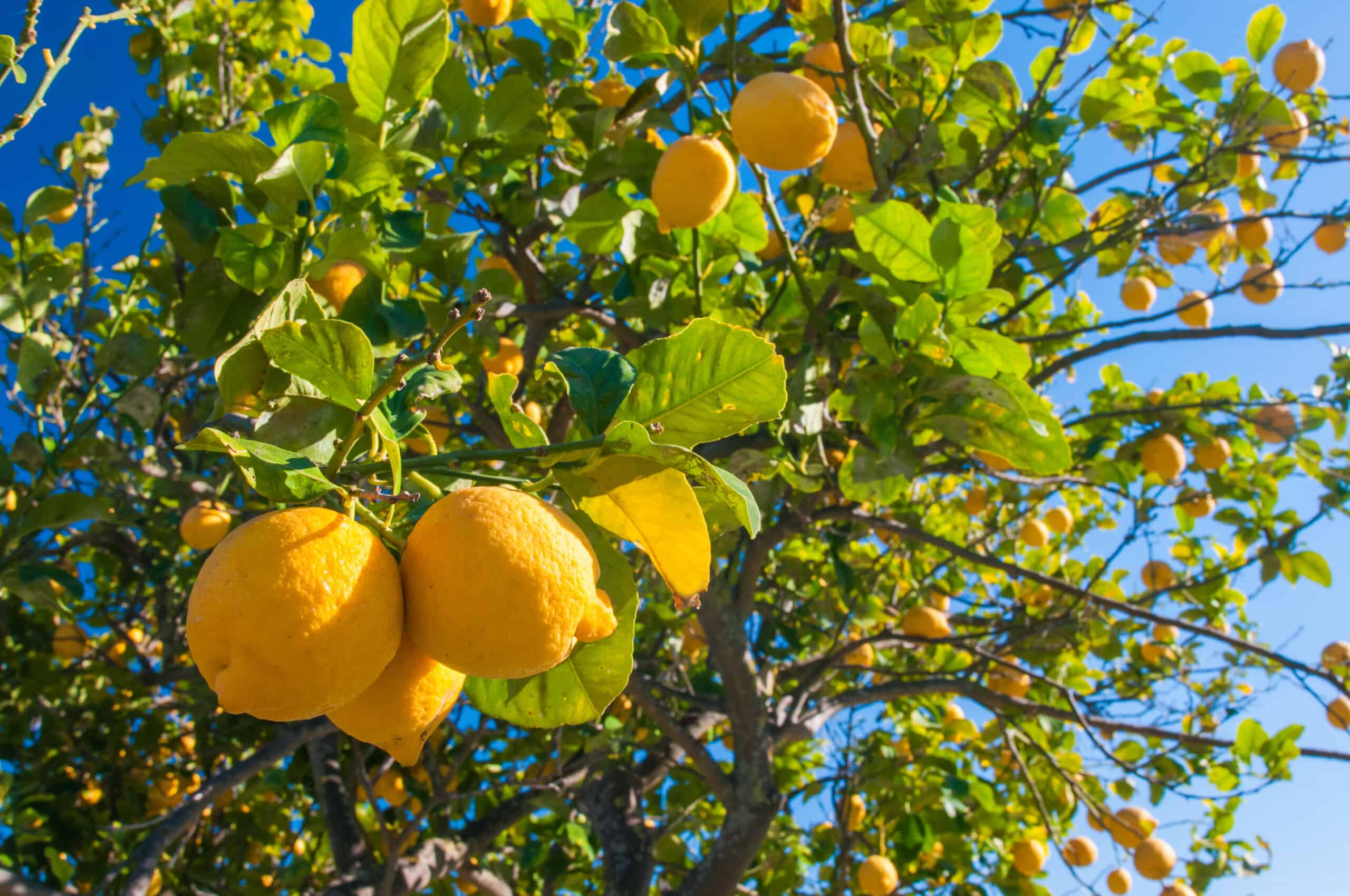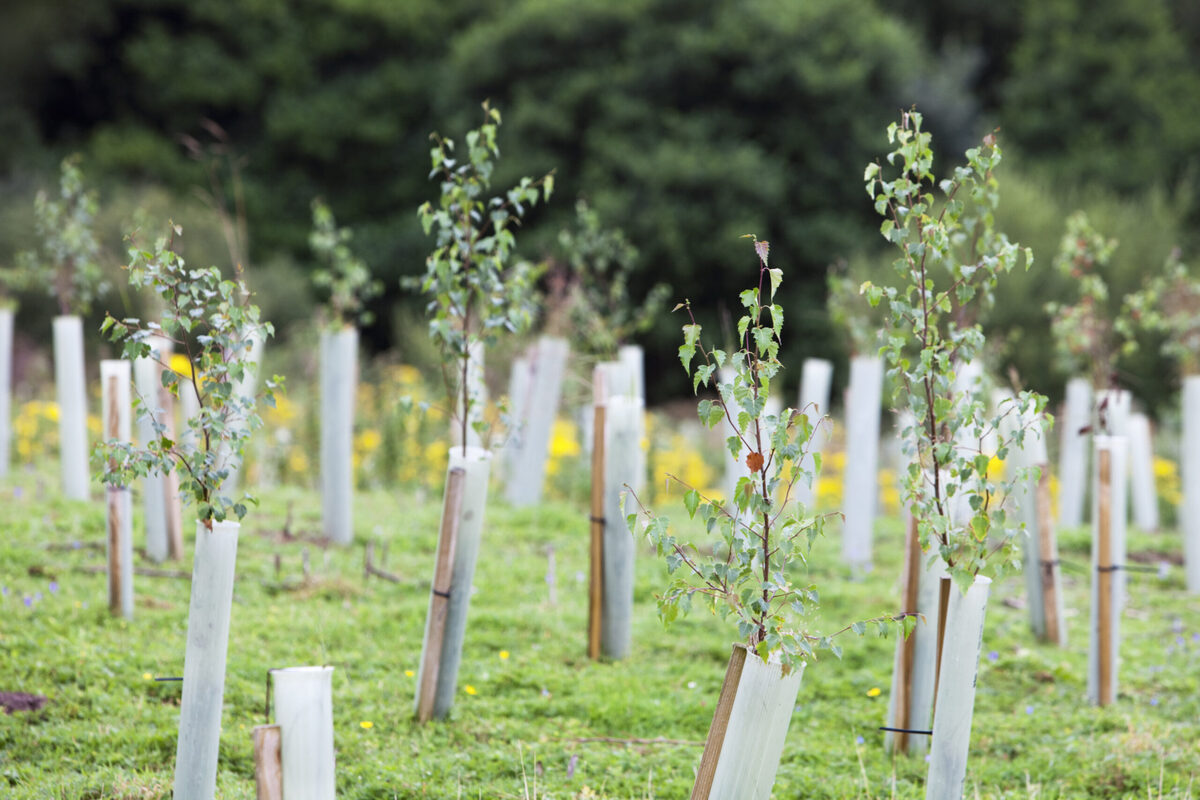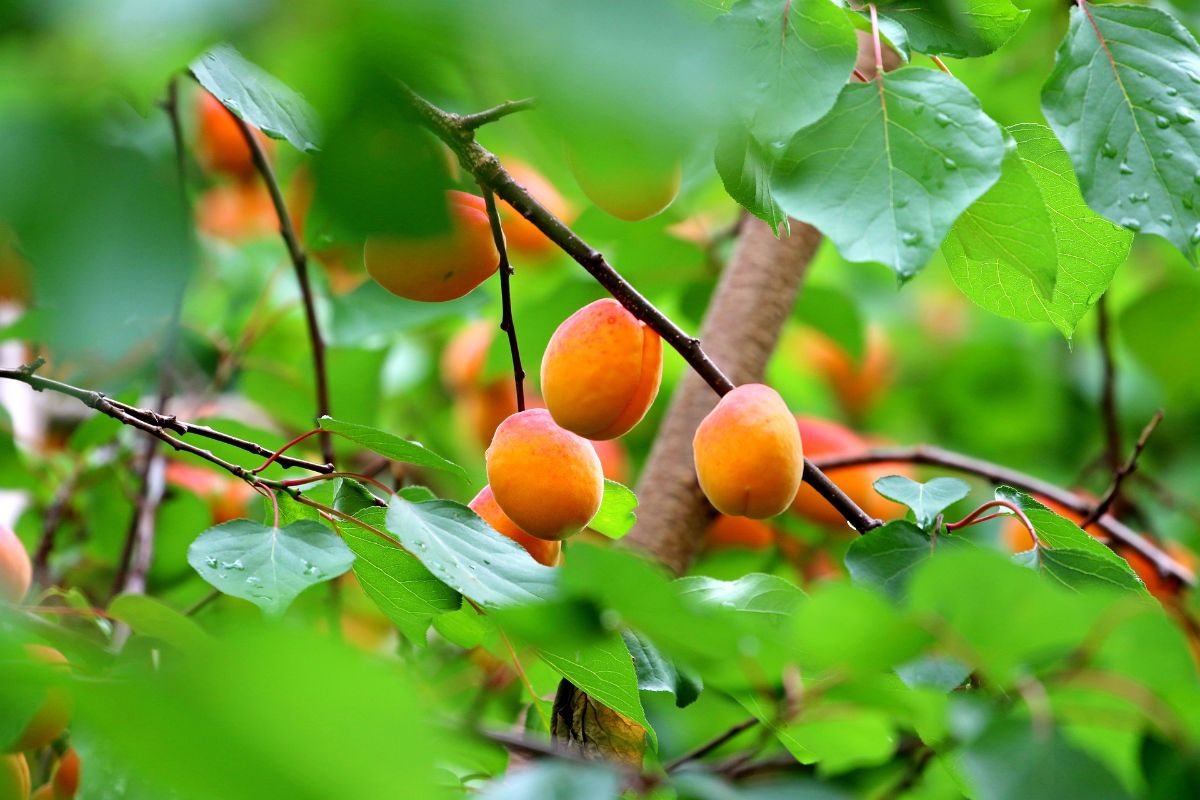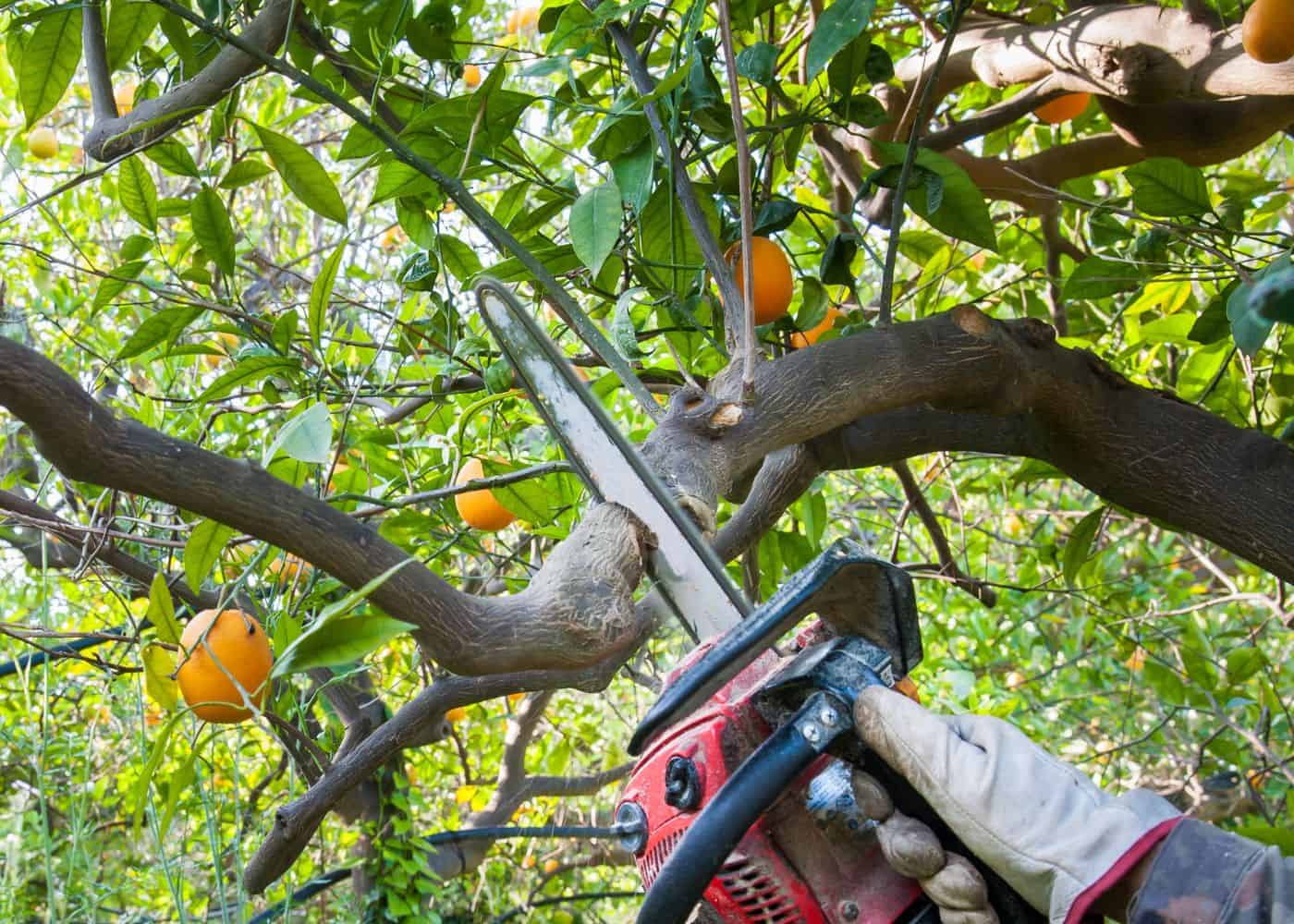Home>Gardening Techniques>Plant Care>When Do You Prune Fruit Trees


Plant Care
When Do You Prune Fruit Trees
Modified: January 22, 2024
Learn the essentials of plant care and discover when to prune fruit trees for optimal growth and yield. Enhance your gardening skills with our expert tips.
(Many of the links in this article redirect to a specific reviewed product. Your purchase of these products through affiliate links helps to generate commission for Chicagolandgardening.com, at no extra cost. Learn more)
Table of Contents
Introduction
In the world of plant care, maintaining healthy and thriving fruit trees is a rewarding endeavor. Pruning plays a crucial role in the growth and productivity of these trees, ensuring they remain strong and bear bountiful fruits. However, knowing when and how to prune fruit trees can be intimidating for beginners.
Pruning is the process of selectively removing certain parts of a tree, such as branches, shoots, or buds, to promote better growth and improve the overall shape and structure. This technique not only helps in managing the size of the tree but also enhances its health and productivity.
Understanding the importance of pruning is essential for all plant enthusiasts, as it directly affects the fruit trees’ performance. Proper pruning can stimulate new growth, improve air circulation, and increase sunlight penetration, which in turn leads to healthier and higher-quality fruit production.
When it comes to deciduous fruit trees, such as apple, pear, or peach trees, pruning is typically done during the dormant season, which is typically late winter or early spring. This is when the tree is not actively growing, making it easier to shape the tree, remove dead or damaged branches, and promote better fruit production.
However, there are also certain instances where pruning may be needed during the growing season, such as when there is excessive growth that needs to be controlled or when removing diseased or infested branches to prevent further damage to the tree.
Regardless of the timing, implementing proper pruning techniques is crucial to avoid any harm to the tree and ensure its long-term health. By understanding the factors to consider, the techniques to apply, and the common mistakes to avoid, anyone can effectively prune their fruit trees and enjoy the benefits of a well-maintained and productive tree.
In the following sections, we will dive deeper into each aspect of pruning fruit trees, providing valuable insights and practical tips to guide you on this rewarding journey of plant care.
Understanding the Importance of Pruning
Pruning fruit trees is not just about shaping the tree and maintaining a visually pleasing appearance; it serves a much greater purpose. Regular pruning is essential for the overall health and productivity of fruit trees, benefiting both the tree and the quality of the fruits it produces.
One key benefit of pruning is the promotion of new growth. By removing old or dead branches, the tree can allocate its resources more efficiently to healthier, younger branches. This encourages the growth of new shoots, which are more likely to bear abundant fruits.
Pruning also plays a critical role in improving air circulation and sunlight penetration within the tree’s canopy. This is particularly important for fruit trees as it reduces the risk of diseases and pests, which thrive in warm, damp conditions. Opening up the canopy allows for better airflow, preventing the buildup of moisture and minimizing the chances of fungal infections.
The increased sunlight penetration resulting from proper pruning is also crucial for fruit development. Fruits need ample sunlight to ripen and reach their full potential in terms of size, color, and sugar content. Pruning helps expose the fruits to adequate sunlight, ensuring they develop properly and taste delicious.
In addition to promoting growth and improving sunlight exposure, pruning also helps maintain the structural integrity of the tree. By removing weak or crossing branches, the risk of breakage during heavy winds or fruit load is significantly reduced. This not only protects the tree but also prolongs its lifespan.
Proper pruning also contributes to the overall ease of fruit tree management. By removing excess branches and rejuvenating the tree, it becomes more accessible to harvest fruits, perform pest control measures, and apply fertilizers or other treatments. This accessibility reduces the risk of injury and improves the efficiency of tree care tasks.
Overall, pruning fruit trees is a critical practice that should not be overlooked by plant enthusiasts. It ensures the tree remains healthy, productive, and aesthetically pleasing. By promoting new growth, improving air circulation and sunlight penetration, maintaining structural integrity, and facilitating easier management, pruning plays a vital role in the success of fruit tree cultivation.
Factors to Consider Before Pruning
Before embarking on pruning your fruit trees, it is important to consider several factors to ensure the process is successful and beneficial for the tree’s health and productivity. Taking these factors into account will help you make informed decisions and tailor your pruning approach to the specific needs of your fruit trees.
One crucial factor to consider is the type of fruit tree you have. Different fruit trees have different growth habits and pruning requirements. Some trees, like peaches and nectarines, produce fruits on one-year-old wood, while others, like apple and pear trees, bear fruit on spurs, which are modified branches. Understanding the growth habits of your specific fruit tree will dictate how you approach pruning.
Another factor to consider is the age of the tree. Young fruit trees, especially those that have been recently planted or are within the first few years of their growth, require a different pruning approach compared to mature trees. For young trees, pruning focuses on developing a strong framework and promoting proper branching. Mature trees, on the other hand, require maintenance pruning to improve fruit production and remove any dead or diseased branches.
The overall health of the tree should also be taken into consideration before pruning. If the tree has any signs of disease or pest infestation, it is advisable to address these issues before proceeding with pruning. Pruning a diseased tree can potentially spread the infection or weaken the tree further. It is best to consult with a plant care professional or a knowledgeable gardener to assess the health of the tree and determine the appropriate course of action.
Timing is another critical factor. Pruning at the right time ensures maximum benefits and minimizes the risk of damage to the tree. For most deciduous fruit trees, pruning during the dormant season, when the tree is not actively growing, is recommended. This typically falls in late winter or early spring. However, there are exceptions, such as fruit trees that are prone to bleeding sap if pruned during this time. Consulting reliable sources or seeking advice from a horticulturist will help determine the best time to prune your specific fruit tree.
Lastly, it is important to consider the overall goals of pruning. Are you looking to control the size and shape of the tree? Do you want to ensure optimal fruit production? Identifying your pruning goals will help determine the pruning techniques and intensity needed. Different techniques, such as thinning, heading back, or rejuvenation pruning, can be utilized to achieve specific objectives.
By considering these factors before pruning your fruit trees, you can ensure that the pruning process is tailored to the unique characteristics of your trees. This will result in healthier trees, improved fruit production, and a more visually appealing landscape.
Pruning Fruit Trees in Dormant Season
The dormant season, typically occurring in late winter or early spring, is the ideal time to prune most deciduous fruit trees. Pruning during this period offers several advantages, including easier tree shaping, reduced risk of disease transmission, and enhanced fruit production.
During the dormant season, fruit trees are not actively growing, making it easier to identify and remove dead, diseased, or crossing branches. This selective pruning helps improve the overall structure and airflow within the tree’s canopy, reducing the risk of fungal infections and promoting healthy growth.
When pruning fruit trees during the dormant season, it is important to follow a few key principles. First, remove any dead or damaged branches, as they can serve as entry points for pests and diseases. Next, eliminate any branches that are crossing or rubbing against each other, as this can cause wounds and negatively impact the tree’s health.
Thinning out branches is another important aspect of pruning during the dormant season. Thinning involves removing a portion of branches, specifically those that are overcrowded or growing vertically instead of horizontally. This practice allows for better sunlight penetration, improved air circulation, and a more open canopy, which all contribute to enhanced fruit production.
When pruning fruit trees, it is essential to make clean cuts just above a bud or branch collar. This ensures proper healing and reduces the risk of disease entry. Avoid leaving stubs or making cuts too close to the trunk, as this can inhibit the tree’s ability to heal and lead to unnecessary stress.
It is also important to consider the desired shape and size of the tree when pruning during the dormant season. Fruit trees can be pruned to a central leader or an open vase shape, depending on personal preference and the specific requirements of the tree’s variety.
Remember, not all fruit trees should be pruned heavily during the dormant season. Some trees, such as cherry or plum trees, may experience excessive sap bleeding if pruned at this time. It is best to research or consult with a knowledgeable gardener or horticulturist to determine the appropriate pruning timing for your specific fruit tree.
Pruning fruit trees during the dormant season is a crucial step in maintaining their health and promoting optimal fruit production. By following proper techniques and principles, you can shape your trees, improve their overall structure, and set them up for a successful growing season.
Pruning Fruit Trees in the Growing Season
While the dormant season is generally the recommended time to prune fruit trees, there are instances when pruning needs arise during the growing season. It is important to understand when and how to prune fruit trees in this period to address specific issues and ensure the overall health and productivity of the tree.
One common reason for pruning fruit trees in the growing season is to control vigorous growth. Some fruit trees, such as certain varieties of apple or pear, can exhibit excessive vegetative growth, resulting in crowded canopies, decreased airflow, and reduced fruit production. By selectively removing excess branches and shoots, you can manage the tree’s growth and redirect its energy towards fruit production.
Another reason for pruning during the growing season is to remove diseased or infested branches. Infestations by pests or the onset of diseases can become evident during this time. Promptly identifying and removing affected branches can prevent further spread and limit the overall impact on the tree’s health.
When pruning fruit trees in the growing season, it is important to follow a few guidelines. First, be mindful of the timing. It is best to avoid pruning during periods of active growth and flowering, as this may disrupt the tree’s natural processes and reduce fruit production. It is recommended to prune in early summer after the tree has finished flowering.
When removing branches during the growing season, make sure to make clean and precise cuts just above a bud or lateral branch. This will facilitate proper healing, reduce the risk of disease entry, and promote new bud development.
Additionally, it is important to be cautious with the amount of growth removed during the growing season. Excessive pruning during this period can stress the tree and potentially impact fruit production in the following year. It is generally advisable to focus on selective thinning and removing only what is necessary to achieve the desired outcome.
Pruning fruit trees during the growing season requires a careful balance between managing growth, addressing infestations or diseases, and promoting optimal fruit production. As with any pruning, it is important to consider the specific needs of the tree and consult reliable sources or seek advice from experienced gardeners or horticulturists when necessary.
By understanding the specific circumstances that warrant pruning in the growing season and applying proper techniques, you can effectively address issues and maintain the health and productivity of your fruit trees throughout the year.
Techniques for Pruning Fruit Trees
Pruning fruit trees involves a variety of techniques that serve different purposes, such as shaping the tree, improving airflow, and promoting healthy fruit production. Understanding and employing these techniques properly will help you make the most of your pruning efforts and maintain the overall health and productivity of your fruit trees.
One primary technique for pruning fruit trees is thinning. Thinning involves selectively removing branches or shoots to reduce the density of the tree’s canopy. This technique helps improve airflow, sunlight penetration, and reduces the risk of diseases by minimizing humidity and creating an environment that impedes the growth of pests and pathogens.
Another technique is heading back or pruning back. This involves cutting back the tips of branches to stimulate new growth and encourage branching. Heading back is often used to control the size and shape of the tree, prevent excessive vegetative growth, and promote more compact and fruiting wood.
Rejuvenation pruning is another useful technique for older, less productive fruit trees. This technique involves removing a significant portion of the tree’s branches to stimulate new growth and rejuvenate the tree. Rejuvenation pruning can help revive neglected or overgrown trees, improve overall fruit production, and restore the aesthetic appeal of the tree.
When pruning fruit trees, it is important to make clean and precise cuts to promote proper healing. Avoid leaving stubs or making cuts too close to the trunk. Cutting just above a bud or lateral branch, slightly angled away from it, encourages new growth and helps the tree heal more effectively.
It is also crucial to regularly inspect your fruit trees for any signs of disease or pest infestation. If you observe diseased or infested branches, make sure to prune them as soon as possible to prevent further spread and minimize the impact on the overall health of the tree.
When employing pruning techniques, keep in mind the specific growth habits and requirements of your fruit tree variety. Some trees produce fruit on one-year-old wood, while others bear fruits on spurs. Understanding the growth patterns and fruiting habits of your specific tree will guide you in making the right pruning decisions.
Lastly, pay attention to the overall shape and size of your fruit tree. Pruning can be used to train the tree to a desired form, such as a central leader or open vase shape. Regularly shaping and maintaining the tree’s structure will improve its overall appearance and productivity.
By incorporating these techniques into your pruning routine and adapting them to suit the needs of your fruit trees, you can effectively shape and maintain healthy trees that yield abundant and high-quality fruits.
Common Mistakes to Avoid While Pruning
Pruning fruit trees is a vital task in plant care, but it is important to be aware of common mistakes that can hinder the health and productivity of your trees. By avoiding these pitfalls, you can ensure that your pruning efforts result in thriving and fruitful trees.
One common mistake is over-pruning. It is important to strike a balance and avoid removing too many branches at once, especially on mature trees. Over-pruning can stress the tree and significantly reduce fruit production. Remember, the goal is to selectively remove branches and promote healthy growth, not to completely strip the tree of its natural structure.
Another mistake is pruning at the wrong time. Pruning during the wrong season, such as when the tree is actively growing or flowering, can disrupt the natural growth cycle and reduce fruit production. Different fruit trees have specific pruning timings, so it is important to research or consult with experts to determine the appropriate time for pruning your specific tree.
Improper pruning cuts can also be detrimental to tree health. Leaving stubs or making cuts too close to the trunk can hinder proper healing and provide entry points for diseases. It is essential to make clean, angled cuts just above a bud or lateral branch, allowing the tree to heal properly.
Using dull or improper tools is another common mistake. Pruning with dull blades or using the wrong tools can result in torn or jagged cuts, causing unnecessary stress and damage to the tree. Make sure to use sharp and clean pruning tools suitable for the size and thickness of the branches you are cutting.
Pruning too much in one season is a mistake that can impact the long-term health of the tree. It is important to remove branches selectively and gradually over time, allowing the tree to adjust and recover. Gradual pruning also helps maintain the natural balance and structure of the tree.
Ignoring signs of disease or pest infestation is a mistake that can have serious consequences. It is essential to regularly inspect your fruit trees for any signs of disease, such as discolored or wilting leaves, and promptly address the issue by removing affected branches or seeking appropriate treatments. Ignoring pests or diseases can spread and weaken the tree, affecting fruit production and overall health.
Lastly, not considering the specific growth habits and requirements of your fruit tree is a common mistake. Different fruit tree varieties have different growth patterns and fruiting habits. Understanding these nuances will help you tailor your pruning techniques and timing to maximize fruit production and tree health.
By avoiding these common pruning mistakes and adhering to proper pruning techniques and timing, you can optimize the health and productivity of your fruit trees. Regular monitoring, careful planning, and executing pruning with precision will result in healthy, beautiful trees that bear abundant and delicious fruits.
Conclusion
Pruning fruit trees is a fundamental aspect of plant care that plays a crucial role in their health, productivity, and overall appearance. By understanding the importance of pruning, considering key factors before pruning, and employing the right techniques, you can maintain healthy and fruitful trees that enhance your garden or orchard.
During the dormant season, pruning fruit trees allows for shaping the tree, improving airflow, and reducing the risk of diseases. Selectively removing dead, damaged, or crossing branches promotes optimal growth and enhances fruit production. Thinning out branches, heading back, or rejuvenation pruning are techniques that help manage growth, control size, and encourage proper branching.
While pruning during the dormant season is recommended for most fruit trees, there are situations when pruning becomes necessary during the growing season. Pruning in the growing season aids in controlling excessive growth, addressing infestations or diseases, and managing fruit production. Timing, precision, and care are important considerations when pruning in the growing season.
Understanding and avoiding common pruning mistakes are essential for maintaining the health and vitality of fruit trees. Over-pruning, incorrect timing, improper cuts, using inadequate tools, and neglecting signs of disease or pests can hinder the longevity and productivity of the tree. Being mindful of these mistakes and practicing proper pruning techniques will lead to healthier and more fruitful trees.
In conclusion, pruning fruit trees is a skill worth mastering for any plant enthusiast. By applying the knowledge and techniques from this article, you can confidently prune your fruit trees in the most effective and beneficial way. Regular pruning will not only optimize the health and productivity of your trees but also bring aesthetic appeal to your landscape and provide you with an abundance of delicious fruits to enjoy.










